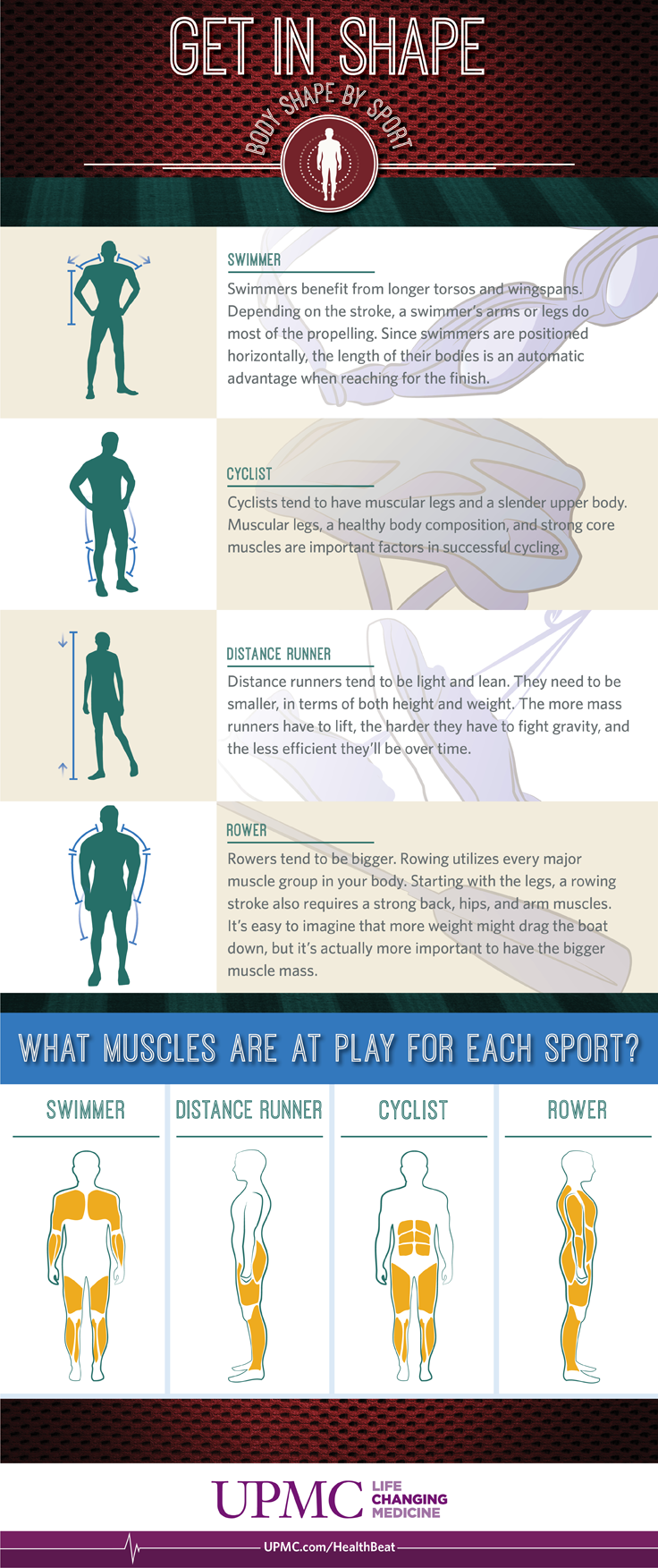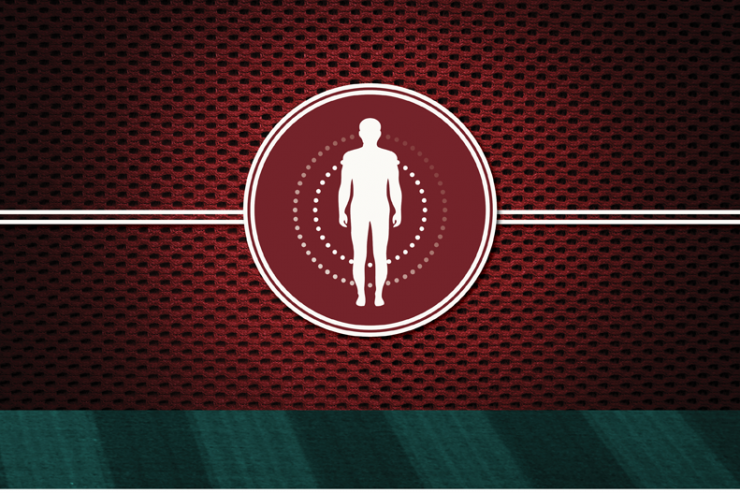Body shapes come in all different shapes and sizes. Every year ESPN Magazine puts out their Body Issue to demonstrate the diversity of athletes and how their training and body structure complements their sport of choice. While you can train for any sport and continue to improve, being light and lean will definitely give you an advantage in marathons, while muscular legs would make you a stronger cyclist.
Check out our infographic below to see how body shapes vary by sport:

Swimmer Body Type
Swimmers benefit from longer torsos and wingspans. Depending on the stroke, a swimmer’s arms or legs do most of the propelling. Since swimmers are positioned horizontally, the length of their bodies is an automatic advantage when reaching for the finish.
Cyclist Body Type
Cyclists tend to have muscular legs and a slender upper body. Muscular legs, a healthy body composition, and strong core muscles are important factors in successful cycling.
RELATED: Bicycle Helmet Safety Tips and Facts
Distance Runner Body Type
Distance runners tend to be light and lean. They need to be smaller, in terms of both height and weight. The more mass runners have to lift, the harder they have to fight gravity, and the less efficient they’ll be over time.
Rower Body Type
Rowers tend to be bigger. Rowing utilizes every major muscle group in your body. Starting with the legs, a rowing stroke also requires a strong back, hips, and arm muscles. It’s easy to imagine that more weight might drag the boat down, but it’s actually more important to have the bigger muscle mass.
Never Miss a Beat!
Subscribe to Our HealthBeat Newsletter!
Thank you for subscribing!
You can now select the specific newsletters you'd like to receive.
You are already subscribed.
Subscribe to more newsletters in our email preference center.
Sorry, an error occurred. Please try again later.
Get Healthy Tips Sent to Your Phone!
About Sports Medicine
An athletic lifestyle carries the potential for injury. Whether you’re an elite athlete or a weekend warrior, UPMC Sports Medicine can help. If you are looking to prevent, treat, or rehabilitate a sports injury, our multidisciplinary team of experts can help you get back into the game. If you are seeking to improve your athletic performance, we can work with you to meet your goals. We serve athletes and active people of all ages and experience levels. Our goal is to help you keep doing what you love. Visit our website to find a specialist near you.
